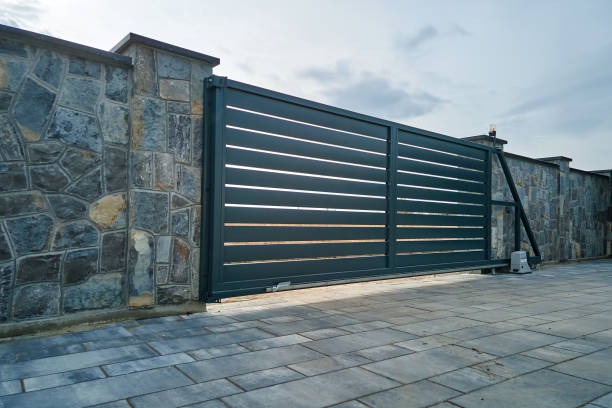Installing a fence can be a rewarding project, whether you’re looking to enhance privacy, ensure security, or add aesthetic value to your property. But before you walk into this endeavor, it’s crucial to understand the timeline for fence installation. Knowing what to expect from start to finish can save you time, money, and headaches.
1. Planning and Preparation
Substantial planning and preparation are involved before any physical work begins. This phase is crucial to ensuring the project runs smoothly.
Research and Design
Start by determining the purpose of your fence. Do you need it to keep pets secure, create a secluded space, or simply add to your home’s curb appeal? Once you know the purpose, you can decide on materials like wood, vinyl, or metal. Make sure to research different designs and estimate costs to stay within budget.
Permit and Regulation Checks
Investigate local regulations and permits required for fences in your area. Since these rules vary widely, especially for projects like a new fence installation in Lorain, it’s essential to check with local authorities or a professional contractor.
2. Choosing the Right Contractor
Hiring a contractor can take your project from concept to completion with less stress.
Finding the Best Fit
When looking for a contractor, get multiple quotes and compare them. Check reviews and past projects to ensure they align with your expectations. Opt for a local professional, like a fence company in Olmsted township, to ensure familiarity with local regulations.
Setting a Timeline
Once you’ve selected a contractor, work with them to set a timeline. Discuss any potential delays and how they will be handled.
3. Site Assessment and Preparation
This phase includes evaluating the site and making necessary preparations.
Marking Out the Area
The contractor or you will mark the boundary where the fence will go. Ensure you know the property boundaries to avoid any disputes with neighbors.
-
Clear the area of debris and plants.
-
Identify any underground utilities.
-
Discuss the timeline with your neighbors if necessary.
Material Selection and Delivery
Once the site is marked and clear, order materials. Ensure everything arrives on time to avoid project delays.
4. Installation Phase
This is where the magic happens, and your vision starts taking form.
Posts and Framework
Setting the posts is the first significant step. Contractors will dig holes, ensuring proper depth and spacing. You might wonder how much concrete per fence post you need—generally, about one bag per post is typical, but it varies based on soil and fence height.
Fence Panel Installation
Once the posts are secure, fence panels or pickets will be installed. This process usually moves quickly, especially with prefabricated panels.
5. Final Touches and Inspection
As the main structure nears completion, attention turns to the finishing details.
Gates and Latches
Ensure gates are installed correctly, providing easy access and security. Test latches and hinges to prevent future issues.
Inspection and Adjustment
Check the entire installation for any mistakes or misalignments. Make any necessary adjustments to maintain both form and function.
6. Maintenance Tips
Once your fence is installed, keeping it in top shape is essential.
Regular Checks
Schedule regular inspections for damage or wear. Look for signs of rot, rust, or loose panels.
Cleaning and Treatment
-
Clean regularly with appropriate solutions.
-
For wood fences, consider yearly treatments to prevent moisture damage.
7. Costs and Budgeting
Understanding the costs involved in fence installation helps you budget effectively.
Material Costs
Prices for wood, metal, or vinyl can vary greatly, impacting the total cost. It’s wise to get estimates from suppliers.
Labor and Installation Fees
Labor costs can differ based on your location and the complexity of the project. Negotiating clearly with your contractor can avoid unexpected expenses.
8. What to Expect Post-Installation
After the fence installation is complete, there are still a few things to consider.
Community Guidelines and Feedback
Notify neighbors about the completion and ensure the fence is within community guidelines. Their feedback may provide you with insights you hadn’t considered.
Landscaping and Aesthetics
Once the fence is installed, consider landscaping to complement it. Planting flowers or shrubs can enhance the visual appeal of your new installation.
9. Future Upgrades
As needs change, consider making upgrades or modifications to your fence.
-
Adding Features: Consider adding decorative elements like post caps, lighting, or trellises to enhance visual appeal.
-
Expanding or Modifying: If your needs change, plan for potential expansions or changes, such as adding height or integrating different materials for a refreshed look.
Final Thoughts
Installing a fence is a complex process that benefits from careful planning and execution. Each step is crucial, from initial research to post-installation care. Follow this guide to navigate the journey smoothly and ensure your new fence is a lasting addition to your property.




